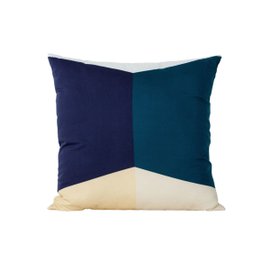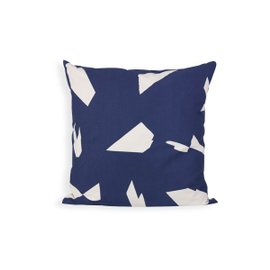Previous
The suitcase that knows where it is and how much it weighs already exists


Your dream house is one step away from you.
Subscribe to our newsletter and get 10% off orders of at least 100€!
Enjoy it and don’t miss out on our offers and updates.


Data Driven Design. Data Informed Design. Big Data Analysis. Data Visualization. There’s no point going on: data has become the code (sic!) of the decade. It all began online, in the virtual universe where half - or three-quarters? - of our daily life is spent. But pretty soon data invaded real life too, changing perceptions and design methods
An example? You’re sitting in your living room, iPad in hand, looking online for a new sofa. You consult Google and make any number of micro-decisions, until it comes to the biggest one: you choose your sofa. All this can be converted into data. Data that’s now used to plan and design the next sofa you’ll be sitting comfortably on, iPad in hand, if the designer gets his way. And yes, this is a true story.
In the case of Rodolfo and Sofia, the two items of furniture produced by ThESIGN, it happened this way - but not quite so simply. LOVEThESIGN accumulated data and information from its community of design enthusiasts, spent a long time analysing it and then passed it on to a designer, Davide Negri, who successfully used it to design genuinely new and attractive products which - really - we were very pleased with. Data Informed Design. Or - perhaps - Data Informed Designer.
But the question remains: is everything really so simple these days with data, even home design? Can we predict the future and revolutionise the market with such ease? Is it enough to be in possession of data? Not exactly. To start with, there are three aspects to bear in mind.
Don’t assume that data is merely numbers. Or rather, the data to be considered is not only numbers obtained from analytics. These figures tell us a lot, but not everything. They tell us what people do, but not why they do it. Or why they don’t.
They can tell us that four out of ten people prefer a particular bookcase. But they can’t tell us what these people expected, or how it makes them feel. The numbers are crossed with other data, which are not always numbers; sometimes they’re about behaviour and other times they’re simply words.
And so? Don’t think of data simply as numbers. Tear yourself away from Google Analytics for a moment and look around you.
Data is not objective truth. It doesn’t give the full picture and it doesn’t tell us how things are going, only about the functioning of certain aspects of whatever it is we’re studying. There’s always a margin of error. It might only be because the data to be collected and the way it’s analysed are always decided and planned by a person. Who has made choices. Who has a point of view. That’s how it is: even behind Google there are flesh-and-blood human beings. For the moment.
Presenting data in the form of figures rather than words, or drawings, can lead easily to deception. Even reality appears as a precise equation if you explain it with a physical formula. But it’s only one interpretation. Over time, formulas change, and usually the earlier ones weren’t wrong, just partial. Don't be deceived.






In 2009 Douglas Bowman, Google’s visual designer, quit the firm. He said he no longer had space to think, to be creative, innovative. The data-centrism of Mountain View is degrading the designer’s role: A team at Google can’t decide between two blues, so they test 41 shades of each blue to see which performs better.
It’s a drift that seems intriguing at first, but soon becomes worrying. Partly because data is always and exclusively about the past. They may say it’s an exceedingly recent past, practically real time, but data can’t tell us the future; it's analysis that does that. Predictions based on models, patterns and trends that are the models, patterns and trends of the past.
And this is why data is inspiration, information, but not innovation. There still needs to be a Douglas Bowman to create something truly new, and hence with ThESIGN there’s Davide Negri. Because the tool of innovation is creativity, not data.



Flos
Michael Anastassiades
Lighting
Gifts
Light Spheres
Steelwood Concept
Henry&Co
Textiles
Fest Amsterdam
Kids Rock Express Delivery
Ferm Living
Kids
Elvang
Tina Elvang
Normann Copenhagen
Winter Decò
Shared Moments Express Delivery
String
Nils Strinning
Furniture
Bathroom
Smart Working
Bathroom New
Nordic Design
White Design

 Back to
Back to
Size*
Quantity*




